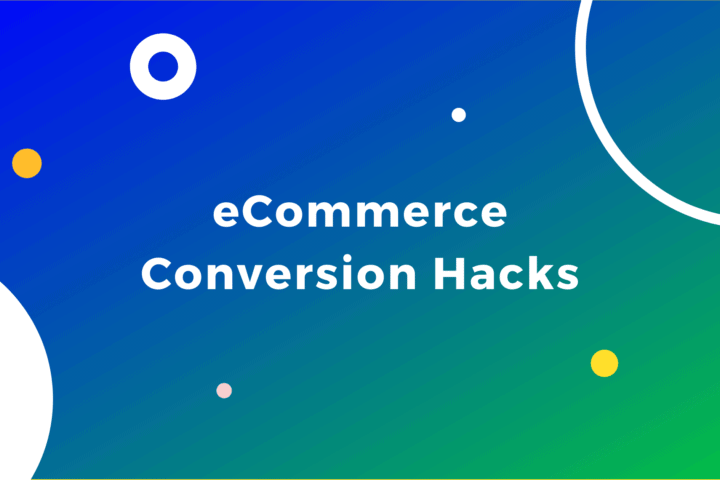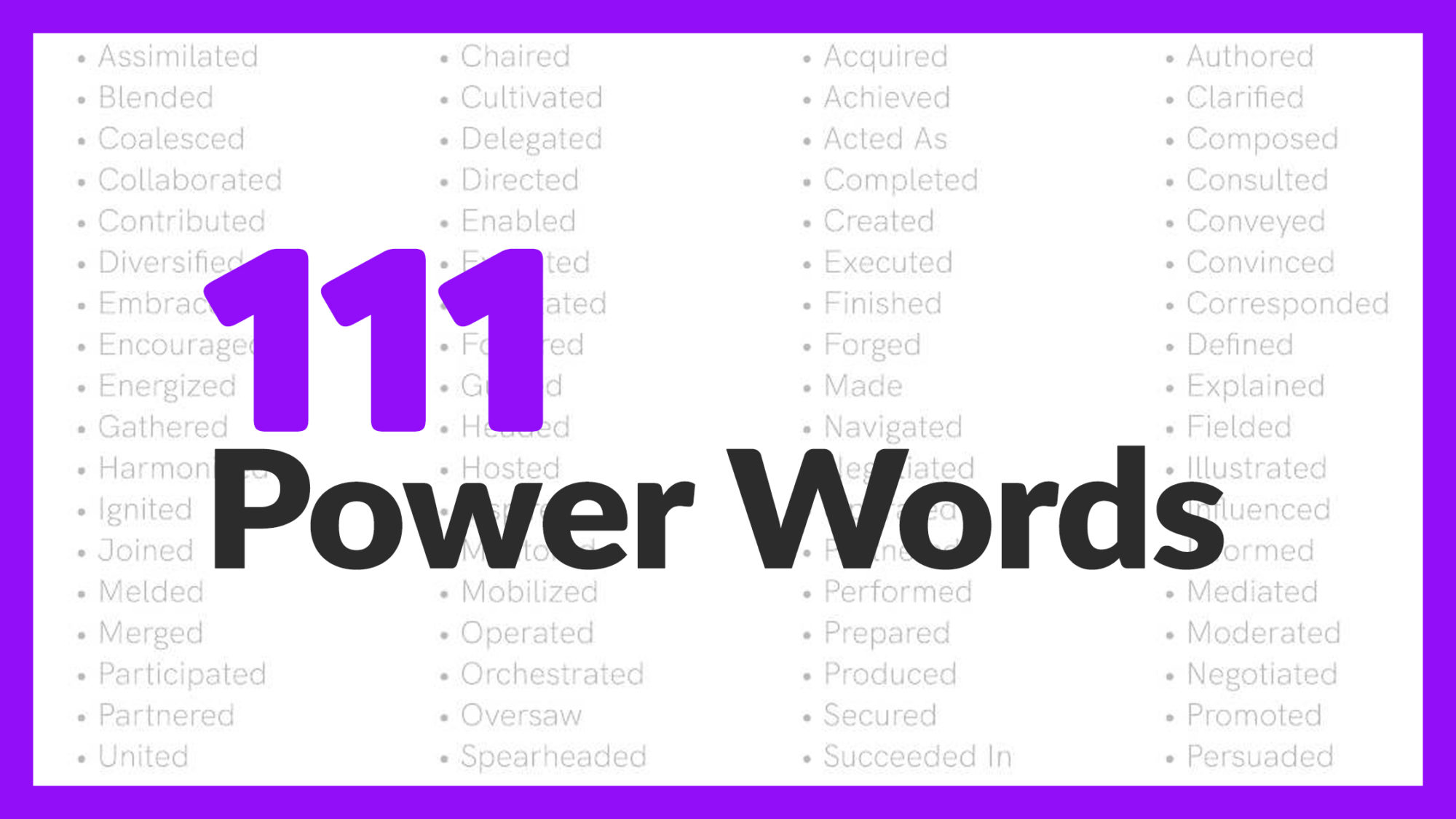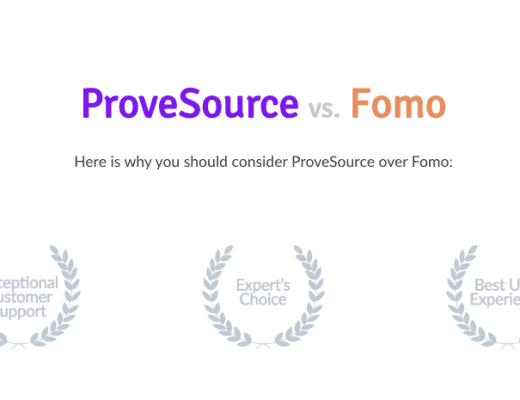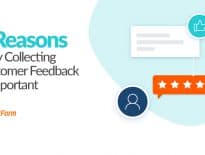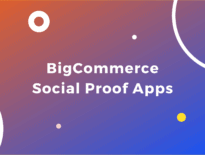Design and build your eCommerce store, launch a paid advertising campaign, and start selling to your prospects.
I wish it was that simple.
The Digital World is getting more and more competitive -day by day- and you have to stand up to the circumstances.
Only 98% of your store visitors will buy from you today. Let’s improve your conversion rate and turn more of your visitors into real customers.
Shall we?
What is eCommerce Conversion Rate?
The conversion rate is the number of conversions divided by the total number of visitors. For example, if an eCommerce site receives 1000 visitors in a month and has 100 sales, the conversion rate would be 100 divided by 1000, or 10%.
This is a pretty good conversion rate!
How to Optimize Conversion Rate?
It is critical to realize that the conversions of an eCommerce business are not just sales.
These are some typical types of website conversions:
- Purchase
- Form submission
- Newsletter signup
- Social Shares
- Clicking a specific CTA button
- Creating an account
- Any other KPI that is valuable for your business.
In order to optimize your conversion rate, you‘ve got to improve the entire shopping experience process.
Let’s get into work!
These are 29 straight forward conversion rate optimization hacks that will boost your eCommerce business.
Stay with me till the end… As always we have some bonus stuff for you!


1. Define Your Target Audience
I am sure you have already done your research. Just checking.
You need to know who you are addressing, to whom you want to sell your products?
Defining your target audience is the first and most essential step especially if you are just getting started.
How to Define Your Target Audience?
Well, the most commonly used data to define the target audience of a company are:
- Age.
- Gender.
- Education background.
- Purchasing power.
- Social class.
- Location.
- Consumption habits.
Write them down. You will save tons of time (you can thank me later 😇).
2. Make Sure Your Website Loads Fast
Does your website load at 2 seconds maximum? Well, it should.
Every extra second can cost you up to -7% in conversions. So:
- Check your website speed (GTMetrxi, Pingdom, PageSpeed Insights)
- Choose a high-performing hosting plan
- Optimize your images (<100kb, 72DPI)
3. Fully responsive website
It may be obvious but many eCommerce websites have not been adapted yet.
Your visitors should have a flawless user experience from whatever device they browse in your store.
4. Copywriting hacks
Use clever copywriting tactics:
- Identify your visitors’ key desire
- Make them a promise to satisfy their desire
- Be positive (make people feel emotions)
- Tell a compelling story (about you or your brand)
- Get your visitors to take action
- Overcome objections:
- How do I know this will work? Include quotes from satisfied customers.
- What if it doesn’t work? Include an ironclad guarantee to reassure anxious buyers.
- How can I trust you? State how long you’ve been trading. Display industry-standard certifications.
- Why should I buy now? If availability is limited, say so.
- Why is it so expensive? Offer a free trial or payment plans.
- etc…(You got it)
5. Use Great Visual Content


We are visual beings. We like to observe everything and of course we like to see before we buy.
Make sure to create visually compelling images and videos if possible.
- 65% of humans are visual learners.
- Colored visuals increase people’s desire to read content by 80%.
- People are 85% more likely to buy a product after watching a video about it.
- Posts with images produce 180% more engagement!
- Our brain processes visuals 60,000 times faster than text.
- Companies that create custom visual content have a 7x higher conversion rate.
This is where we come in 🤩! Social Proof is maybe the most important factor that defines our
buying behavior. Make sure to check out our Social Proof Playbook – if you haven’t already.
In brief, these are the key social proof types (aka “trust signals”) to include in your social proof strategy:
- Expert’s approval
- Celebrity Endorsement
- User testimonials and reviews
- Business credentials, awards, and recognition
- Social media shares
- Word of mouth
7. Promote your sales section


Who doesn’t love a good sale? Some people will buy things they might don’t even need just because they’re on sale.
Satisfy them by making sure that they find what they’re looking for right away.
Consider that 45% of shoppers will only buy discounted products.
8. Don’t Distract Shoppers
Did you know that the human attention span is just about 12 seconds – like a goldfish maybe?
Make sure to take full advantage of those 12 seconds without destructing your shoppers while they are shopping.
Things to avoid:
- Complicated Checkout
- Required Registration
- Many pop-ups at the wrong time
- Distinct social media buttons (we do not want visitors to leave our website)
- Giving too many choices
9. Optimize your Site’s Search Bar


Make it easier for your visitors to find exactly what they are looking for like Amazon does.
Follow these simple site search bar optimization recommendations:
- Sticky search box
- CTA text in the search bar
- Auto-complete suggestions
10. Offer free shipping
You have to define a free shipping policy. Can you afford free shipping? Do you want to set a minimum order limit? Do you want to cover the shipping costs by increasing your product prices?
The choice is yours. Have in mind that:
If your store does not offer free shipping in some way, your potential customers are going to look elsewhere.
11. Shorten your eCommerce checkout process
If your store checkout process is too prolonged, complex, or unusual, you may lose a lot of customers even if they are ready to buy.
Try to keep your checkout process on one page if possible with simple dropdowns if needed.
12. Use cart abandonment software
Cart abandonment is a headache for every retailer. The average eCommerce store loses over 75% of its sales to cart abandonment.
Some industries encounter average cart abandonment as high as 83.6%.
Many studies are exploring why visitors add items to their cart just to leave your site without making a purchase.


Source: Baymard Institute
So make sure that you are using cart abandonment software, reminding your customers that they left a product in the cart.
13. Use SSL
- Did you know that 100% of website visitors notice the green address bar?
- 97% of the visitors feel comfortable with giving their credit card information to a website with a green address bar.
- 93% would prefer to do business with a website that has the green address bar,
- 77% would hesitate to shop at a website without one.
I rest my case.
14. Easy to Find Products Structure
This is crucial, especially for your first-time shoppers. Structure your eCommerce store to deliver the best user experience possible and help first-time shoppers find everything they need.
- Make Your Site Easy to Navigate
- Ensure Your Site Search Is As Good As an Assistant
- Use Product Filters to Make Browsing Effortless
- Optimize the Experience For Mobile and Tablet Users
👍 Pretty straight forward, right?
15. Take Advantage of your Checkout Page
The most important part of your website is your checkout page. This is where your prospects become customers (aka: this is where you make money).
Here are 10+1 great hacks to increase successful submissions on your checkout page:
- Highlight your refund policy on Your checkout page
- Create FOMO
- Prefer price rounding
- Display an error message for incorrectly-filled fields
- Provide visual feedback to reward completed steps ✔️
- Ask for credit card details last
- Prefer smaller font sizes to indicate costs on your checkout page
- Reduce the number of forms needed to complete the purchase
- Optimize your checkout page with testimonials and real people images
- Set a free delivery deadline to create urgency
- A/B testing the page to define which change makes a positive difference. Testing shows you the right path.
16. Show Shopping Cart Contents
Show a shopping cart icon with a link to get to it after the user has entered an item into the cart. If they can’t find the cart they can’t checkout.
17. Give Detailed Product Descriptions
A bad product description can potentially turn someone away from a sale. One e-commerce study found that 20% of purchase failures are potentially a result of missing or unclear product information.
You don’t have to be super analytic. The features of a product are very specific. Just be sure to include them.
The top goal is to explain what the product does and why someone should buy it.
18. Let Customers Review Products
Well, reviews bridge the gap between traditional word-of-mouth and a viral form of feedback that can influence the consumer’s opinion.
There is nothing more effective than word-of-mouth marketing.
6+1 Reasons Product Reviews are important:
- They help you to better understand your customers & improve customer service
- Provide credibility & social proof
- Enable -especially- new businesses to stand out from the competition. Which company would you rather buy from: one with 50 3-star reviews or one with 5 5-star reviews?
- They improve rankings helping businesses rank well in local search even if they might have low-quality link profiles.
- Your customers are doing your marketing for you
- Finally, reviews generate more reviews…
Why do so many people buy from Amazon? Because of the reviews.
19. Multiple Payment Options
Include credit cards, debit cards, PayPal, purchase orders, money orders, cashier’s checks, and more in your payment options.
You could also offer online, by phone, or by mail payment options. Statistics show that your conversion rate will increase if you offer multiple methods of payment.
Think about all of the different demographics of online shoppers. They all have different expectations when doing online transactions. Multiple options are necessary to meet all of their needs.
20. Have a Clear Product Return Policy
Everybody hates returns and refunds in eCommerce. No doubt about that. It is also one of the top pain points for online shoppers.
Almost 1 out of 2 customers read the return policy before they buy. Just be sure to make it as painless and as easy as possible for customers to return products within reason without being over-promising of course.
21. Always Create Valuable Content
Content marketing is everything these days. There are so many digital platforms and so many ways to reach your potential customers.
Be sure to create valuable content in any form. How to be sure that your content is valuable?
Just follow these simple steps:
- Locate your audience
- Develop your content strategy
- Create your content
- Get interactive (Infographics, podcasts, animated videos, on-site calculators, sliding galleries, etc)
- Broaden your reach (through social media, partnerships, authoritative sources etc)
22. Capture Emails
Most of the time first-time users may take more than one session on your website to convert.
That is why capturing emails on your site is critical.
Try to capture emails through a pop-up, offer a coupon code so you can continuously market to them while they are in the decision phase.
This will considerably improve your conversion rates. Guaranty!
23.Grab Visitor’s Attention the Quickest Possible
As you might already know the first 3 seconds matter the most when someone lands on your site. This is the first impression.
Assuming that you have a fast website you have got 7 seconds to grab your visitor’s attention. Just follow these simple five tactics:
- Personalize your website content
- Be creative and unique
- Be straightforward
- Add visual content
- Merge design with your brand’s story.
24. Use “Calls to Action” Sparingly
“Where should I place my CTA?”. Well, that is a very common question.
No one has come up with one clear solution like the “top-right corner of every web page” that solves this puzzle of where to put CTAs for optimal engagement.
However, these are 4 safe tactics:
- Make your CTA look like a button
- Create exceptional copy with a sense of urgency
- Size it right (An enormous CTA could get ignored due to a UX phenomenon known as “banner blindness” or human tendency to ignore banners.)
- Always test your results and adapt
25. Have a Unique Selling Proposition
Just ask yourself. Why should a visitor buy from you?
A unique selling proposition is an essential part of creating pricing power and a business that customers genuinely relish.
A good selling proposition defines your company’s unique position in the marketplace.
Stand apart from competitors and actively focus your energy on creating things address to your ideal group of customers.
26. Chatbots
Chatbots were the next big thing. Not any more. Most websites use completely automated chatbots which in general degrade the UX.
If you decide to use one, at least use it wisely:
- Informing that a real human will be with them shortly
- Providing answers only to FAQs
- Or using a more sophisticated chatbot with AI like Chatbot.com.
27. Personalization
Personalization is the future and the key to success. The more the better.
With so many digital and physical businesses consumers receive extremely more messages than they can handle.
The more personalized the ad or suggestion you make to your users, the more likely they will stay on your site and eventually buy from you.
Especially ιf you have tons of traffic you will definitely need a CRM tool to help you personalize all your marketing efforts – onsite and offsite.
Does the word “Hubspot” sound familiar?
Bonus Stuff as Promised
3 Essential Ecommerce Conversion Rates Tools
1. HotJar


Hotjar is a behavior analytics and user feedback service that helps you understand the behavior of your users while browsing your website.
You can study their behavior through tools such as heatmaps, session recordings, and surveys.
Hotjar is a great and useful addition to the data and insights you get from common web analytics tools like Google Analytics.
It’s a leader in the analytics industry and an extremely easy-to-use service that couples user behavior analysis and website feedback tools to help you realize what’s actually occurring on your site and what your users really care about.
4 Indisputable reasons to use Hotjar
- It provides you with visual analytics giving you the advantage to experience your website through your visitors’ eyes.
- It helps you collect the feedback that explains your users’ behavior with pop surveys to the ones who made a purchase asking them what almost stopped them!
- It is extremely easy to use while giving you fast insights.
- Hotjar basic i’s free to use forever having many plans according to your needs and the size of your team.
2. Google Analytics:


If you haven’t installed Google Analytics on your website: stop reading. Go and install it on your website right away!
Just kidding… I am sure you already did. 🙄
Yeap, there are still lots of websites that are not using Google Analytics -or any kind of analytics- to measure their website traffic.
Assuming that you are a webmaster or even a simple website owner you would definitely have questions like these:
- How many people visited my website yesterday, last month, last year?
- Where do my visitors live?
- How many visitors are browsing through mobile devices?
- Where’s my website traffic coming from?
- Did my last ad campaign work?
- Which are the most popular pages on my website?
- How many visitors converted?
Well, GA has the answers.
3. Marketo


Marketo is a sales automation tool, so your business can work smarter when it comes to generating leads and then converting them into real customers.
This leading-industry sales software easily integrates with most CRMs, so there won’t be much manual inputting of customer data.
It reveals your sales team’s most valuable customers and hottest leads, so they can dedicate their time more efficiently.
Marketo is a top-notch sales software for driving website visitors into -and through- the sales process of converting:
into a lead then a buyer and finally a loyal customer.
[Additional] Metrics to Optimize your eCommerce Conversions:
Bounce Rate
This is the percentage of people who leave after viewing a single page. A high bounce rate is not a negative thing.
People aren’t finding what they’re looking for in your store, so they are leaving almost immediately after landing on your site.
Click-through rate
There is the number of people who click a link to your website from an ad or email. Optimization for AdWords or email marketing campaigns often focuses on getting more users to click through to your website and take an action — or even engage on social media.
You can find these metrics in your Google Analytics account under “Behavior > Overview”.
Average Session Duration
This is an engagement metric that gives you a general idea of how long people are sticking around your site. A high bounce rate means a low average time on site — visitors aren’t sticking around long enough to do whatever it is you want them to do (convert).
Average Page Depth
This is an engagement metric that tells you how many pages a potential shopper visited before leaving. This metric is simply total pageviews per session duration. Note that more page views can mean more engagement but also can mean a lack of clarity in your conversion funnel if no conversion is present.
Conclusion
Ecommerce Conversion Rate Optimization is a pretty straightforward task. But the truth is that there are so many factors that you‘ve got to take into account and even more tools that can help you.
Do not rush and be patient.
Start with baby steps and test your progress on a regular basis.
It definitely worths your time, it’s the revenue of your business that is on the stake!
Alrighty then!
If you have read till here I am sure you are making great work!
💪 Keep it up!

